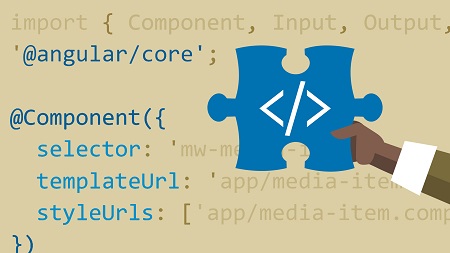
English | MP4 | AVC 1280×720 | AAC 48KHz 2ch | 2h 48m | 515 MB
AngularJS was designed by Google to address challenges programmers face building complex, single-page applications. This JavaScript framework takes care of the back end so you can take care of the client side. Angular 2 Essential Training introduces you to the essentials of this “superheroic” framework, including powerful features such as rich templates, change detection, user interactions, two-way data binding, comprehensive routing, and dependency injection.
Justin Schwartzenberger steps through the framework one feature at a time, focusing on the new component-based architecture of Angular 2. You’ll learn what Angular is and what it can do, as Justin builds a full-featured web app from start to finish. After mastering the essentials, you can tackle the other project-based courses in our library and create your own Angular app.
Topics include:
- What is Angular?
- Setting up an Angular template
- Creating a component
- Binding events and properties
- Getting data to components
- Using directives and pipes
- Creating Angular forms
- Validating form data
- Understanding dependency injection
- Providing services
- Making HTTP calls
- Routing
Table of Contents
Introduction
1 Welcome
2 Why use AngularJS 2
3 What you should know before watching this course
4 Using the exercise files
5 Basics of TypeScript
6 Course overview
Architecture Overview
7 Components, Bootstrap, and the DOM
8 Directives and pipes
9 Data binding
10 Dependency injection
11 Services and other business logic
12 Data persistence
13 Routing
Components
14 NgModule and the root module
15 Component metadata
16 Bootstrapping the module for the browser
17 The component selector
18 The component template
19 Styling a component
20 Using other components in a component
21 Interpolation and the expression context
22 Property binding
23 Event binding
24 Getting data to the component with Input
25 Subscribing to component events with Output
Directives and Pipes
26 Structural directives – NgIf
27 Structural directives – ngFor
28 Attribute directives – built in
29 Attribute directives – custom
30 Using directive values
31 Working with events in directives
32 Angular pipes – built in
33 Angular pipes – custom
Forms
34 Angular forms
35 Template-driven forms
36 Model-driven forms
37 Validation – built in
38 Validation – custom
39 Error handling
Dependency Injection and Services
40 How Angular does dependency injection
41 Services in Angular
42 Class constructor injection
43 Building and providing a service
44 Using the service in components
45 The Inject decorator
46 Injection token
HTTP
47 The Angular HttpClient
48 Use a mock back end for HTTP calls
49 Use the HttpClient for GET calls
50 Use search params in GET calls
51 Use HttpClient for POST and DELETE calls
Routing
52 Setting the base href and configuring routes
53 Registering routing in the app module
54 Router outlets
55 Router links
56 Working with route parameters
57 Using the Router class to navigate
Conclusion
58 Next steps
Resolve the captcha to access the links!